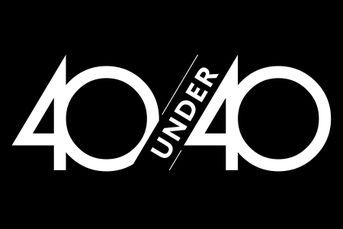Bond market message to Fed: Your 4% rate outlook is too high
The bond market, unparalleled in predicting shifts in the U.S. economy over the decades, has a message: Interest rates aren't going to rise as high as even the Federal Reserve's own forecast.
From bond yields to futures and swaps, traders see little chance the economy will strengthen enough over the course of its expansion to compel the Fed to lift its overnight rate beyond about 3.3 percent. That’s less than the historical average of 4.25 percent that New York Fed President William Dudley said would be consistent with the central bank’s current target for inflation and compares with its long-term estimate of 4 percent.
The divergence reflects deepening concern among bond investors that tepid wage growth and a lack of inflation will persist for years to come, and hold back growth as the Fed moves to end its unprecedented monetary stimulus. Lower peak rates will also reduce the likelihood of any sell-off in longer-term Treasuries, which have rewarded holders this year with the biggest returns in two decades.
“The market’s pricing in an extraordinarily slow Fed,” Margaret Kerins, head of fixed-income strategy at Bank of Montreal, one of 22 primary dealers that trade with the central bank, said May 20. “Potential growth is a huge determinant of that long-term rate and most people are buying into the idea of lower potential growth.”
BMO forecasts the central bank’s benchmark Federal funds target rate will peak at 3.75 percent. The Montreal-based bank’s estimate for the terminal rate, as it’s known in the bond market, was 4 percent at the start of 2014.
Mixed Signals
While economists say the Fed will keep its benchmark rate between zero and 0.25 percent until 2015, traders are already weighing in on how high it will ultimately go.
In the Fed’s “dot plot” of interest-rate projections released on March 19, the median year-end estimate was 1 percent for 2015 and 2.25 percent for 2016.
The market’s view is about 0.63 percent and 1.64 percent, based on the implied yield premium of eurodollars, the world’s most actively traded short-term interest rate futures, over swaps priced to the Fed funds effective rate in those years.
The Fed’s “long-run” forecast is also 0.7 percentage points higher than traders foresee by 2019. The rate on a one-year interest-rate swap traded five years forward, another proxy for short-term rates, fell to 3.4 percent this month, data compiled by Bloomberg show.
“The market clearly doesn’t believe in the Fed’s forecasts,” Thomas Costerg, an economist at Standard Chartered PLC, said May 21.
Fed Skeptics
Even though the dots representing the views of individual Fed officials are anonymous, Chairman Janet Yellen’s own concern over slack in the labor market suggests she may also see rates ending at a lower level than many of her colleagues and help to sway their assumptions for growth and rates, according to Michael Gapen, a senior U.S. economist at Barclays PLC.
In May 7 testimony to Congress, Ms. Yellen said the jobless rate, which was 6.3 percent in April, is still “elevated” and the number of Americans working part-time who would prefer full-time work is “historically high.”
Hourly earnings in April also stagnated from the prior month, while increasing 1.9 percent from a year ago, which matches the smallest gain since October 2012.
“The view is her dots are below the median path and her dots matter more,” Mr. Gapen said. “That’s one of the explanations we have heard why the market path is below the median.”
Yellen’s Dots
Evidence that a weaker labor market will constrain demand and inflation, which has fallen short of the Fed’s 2 percent goal for 23 months, has caused investors to pour into government bonds. That upended economists’ predictions for a second year of losses as a strengthening economy prompted the Fed to reduce its $85 billion-a-month bond buying program.
Treasuries due in 10 years or more have returned 10.6 percent this year, the most on a year-to-date basis since 1995, data compiled by Bank of America Merrill Lynch show. Yields on 10-year notes, which fell more than a half-percentage point to 2.47 percent on May 15, ended at 2.53 percent last week. The yield was 2.54 percent Tuesday in London.
Bond investors may be underestimating how high the Fed will need to lift rates once the five-year-old expansion finally takes off, said Boris Rjavinski, New York-based U.S. interest-rate derivatives strategist at UBS AG, a primary dealer.
The extra yield investors demand to hold 10-year notes based on the outlook for growth and inflation has fallen by about half this year to 0.81 percentage point, using a model of the term premium that’s calculated by New York Fed researchers.
‘Old Normal’
Since 1961, the term premium averaged about 1.6 percentage points, the researchers’ data show.
“The old normal for the economy is not dead, it is slowly coming back,” he said by telephone on May 20. He says 10-year yields will end the year at 3.5 percent.
Most Wall Street forecasters agree, calling for yields to rise as the economy shakes off the effects of the harsh winter. They foresee yields reaching 3.25 percent by year-end as the economy expands 2.5 percent this year and accelerates 3.1 percent in 2015. In the three previous cycles of rate increases in the U.S., which ended in 1994, 1999 and 2006, the Fed also pushed borrowing costs past 5 percent as growth gained momentum.
The bond market may still have history on its side when it comes to the U.S. economy and interest rates.
Falling yields on longer-term Treasuries historically reflected periods of lackluster growth. Since 1960, they predicted seven of the last eight recessions when 10-year yields fell below 3-month bill rates, data compiled by Bloomberg show.
Slower growth prospects mean the Fed won’t need to raise rates much before stopping, according to David Robin, New York-based interest-rate strategist at Newedge, who cut his terminal rate projection to as low as 2 percent from 4 percent.
“It’s an uneven recovery and that’s what the market is adjusting to,” he said by telephone on May 14.
(Bloomberg News)
Learn more about reprints and licensing for this article.






